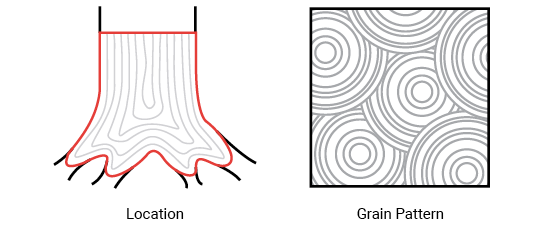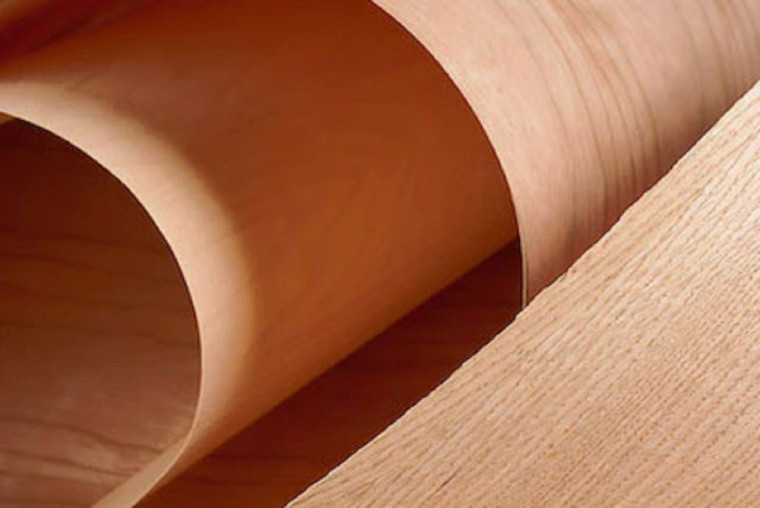Timber veneer is manufactured in one of two ways – either by ‘peeling’ the trunk of a tree or by thinly slicing large rectangular blocks of wood known as flitches. Most veneer panels are cut at around 0.6mm thickness as a standard for our Australian market. Of course, depending on the demands of each project, varying thicknesses can be created. The appearance of the grain in the veneer comes from slicing through the growth rings of a tree, and each veneer’s unique visual characteristics will depend on the angle at which the wood is sliced. The following is a description of the most common timber veneer cuts and grain patterns available.
Rotary cut veneer
This veneer is created by slicing the log around its circumference, following the annual growth rings. This creates a bold, variegated grain, and enables very wide leaves to be produced. Rotary cut veneers are most often used in plywood production.
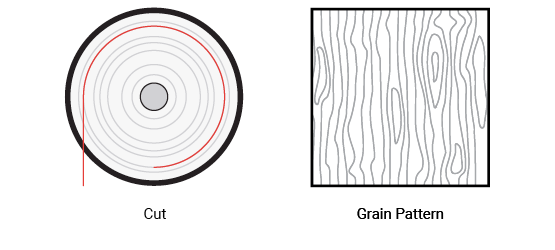
Quarter cut veneer
To create a quarter cut veneer, the log is first cut into quarters, creating four flitches. Each quarter flitch is then straight sliced, at roughly right angles to the growth rings. This then produces a veneer with a uniform lined vertical grain.
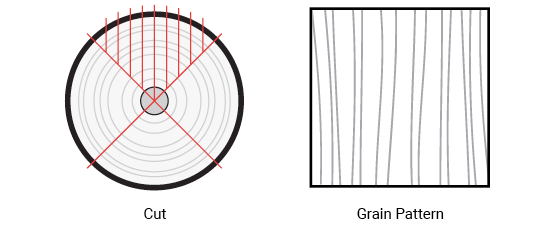
Crown cut veneer
For crown cut veneers, the log is cut in half, and the halved log is then sliced straight across. The cut runs parallel to a line through the centre of the log, and at a tangent to the growth rings. Crown cut veneers tend to have a strong grain pattern in their centre and a more linear effect at the edges.
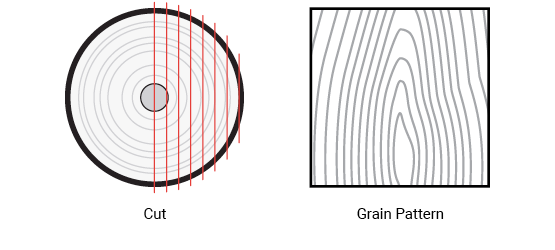
Rift cut veneer
Rift cutting is used mainly for Oak species, which have lines radiating out from the centre of the log. The log is quarter cut, with each quarter being sliced slightly across the outward radiating lines of the tree. This accentuates the vertical grain.
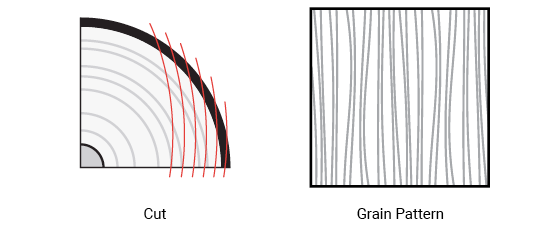
Half round cut veneer
For half round cut veneer, the log is mounted off-centre in a lathe. Slices are then taken slightly across the growth rings. This produces veneer leaves with some of the visual characteristics of both crown cut and rotary veneers.
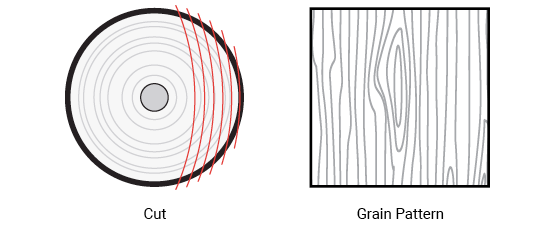
Burl veneer
A burl is a tree growth in which the grain has grown in a deformed manner. It’s commonly found in the form of a round outgrowth on a tree trunk or branch, often filled with small knots from dormant buds. Burl veneers are valued for their highly intricate and unique patterns.
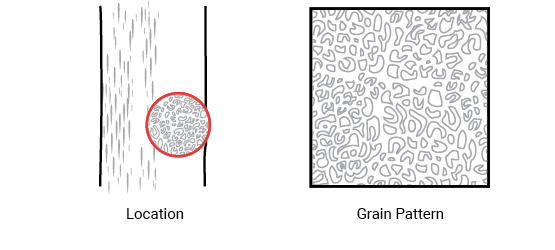
Curl veneer
Curl veneer is created by cutting at the junction of tree trunk and branches. The unique patterning is the result of the wood that’s been confined and twisted between the two limbs as they increase in size.
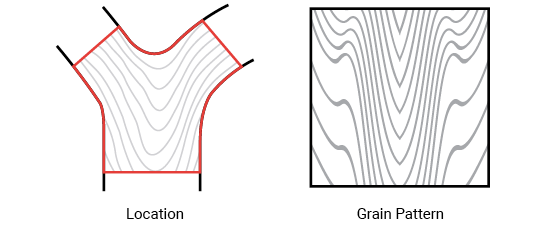
Butt veneer
Butt veneer is created by slicing the logs across the annual rings occurring at the ends as opposed to standard quarter cut or crown cut. These small veneers, when laid out onto panels, give an illusion of natural round logs stacked onto each other.
